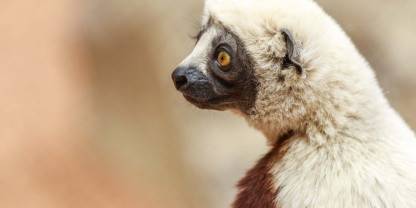Average Expert Rating
Rating Breakdown
Write a User ReviewMadagascar’s Last Dry Deciduous Forest
Ankarafantsika National Park contains the last dry deciduous forest in Madagascar. The park is good for general wildlife. Its eight lemur species include real gems, such as the mongoose lemur, which you’ll almost certainly not see elsewhere, and the woolly grey mouse lemur. The rather lovely, and relatively new to science, golden-brown mouse lemur is also found here. Of all the 70 or more reptile species found here, my favorite (and the favorite of most visitors) is the rhinoceros chameleon. Take a look at the nose of the male, and you’ll know straight away how it got its name. And the chance to visit the captive-breeding program (run by the Durrell Wildlife Conservation Trust) for the threatened ploughshare tortoise always gives me hope.
But it’s the birds and the hiking that really make this park stand out for me. At last count, 129 species, nearly half of all species found in Madagascar, have been seen within the park’s boundaries. I heard the sickle-billed vanga
But it’s the birds and the hiking that really make this park stand out for me. At last count, 129 species, nearly half of all species found in Madagascar, have been seen within the park’s boundaries. I heard the sickle-billed vanga
Read more
before I saw it, while the critically endangered Madagascar fish eagle also inhabits these parts. And eight short hiking routes take you within reach of the park’s exceptional scenery, with forests, a canyon and lemurs in the west and baobab-fringed lakes in the north.A Little-Known Gem Hiding a Sacred Lake and Canyon
Off-the-beaten track Ankarafantsika National Park is most known as a great birding destination. The woodland is home to several localized birds including Van Dam’s vanga and Schlegel’s asity. I took a boat trip on the sacred Lake Ravelobe in the hope of ticking off the rare endemic Madagascar fish eagle and I was thrilled to see one catching a fish. Birders and non-birders alike will want to walk to the spectacular Ankarokaroka canyon. The photogenic sandstone gorge created by river erosion looks most beautiful in the late afternoon light. Aside from the scenic highlights, I enjoyed a group of Coquerel’s sifakas moving through the forest at speed and I was amazed at the ease with which they propel themselves between branches up to 10m/32ft apart. Their terrestrial motion, resembling a jumping kangaroo with outstretched arms for balance, is less graceful. The headquarters at Ankarafantsika houses a breeding center for the critically endangered ploughshare tortoise. Although visitors

